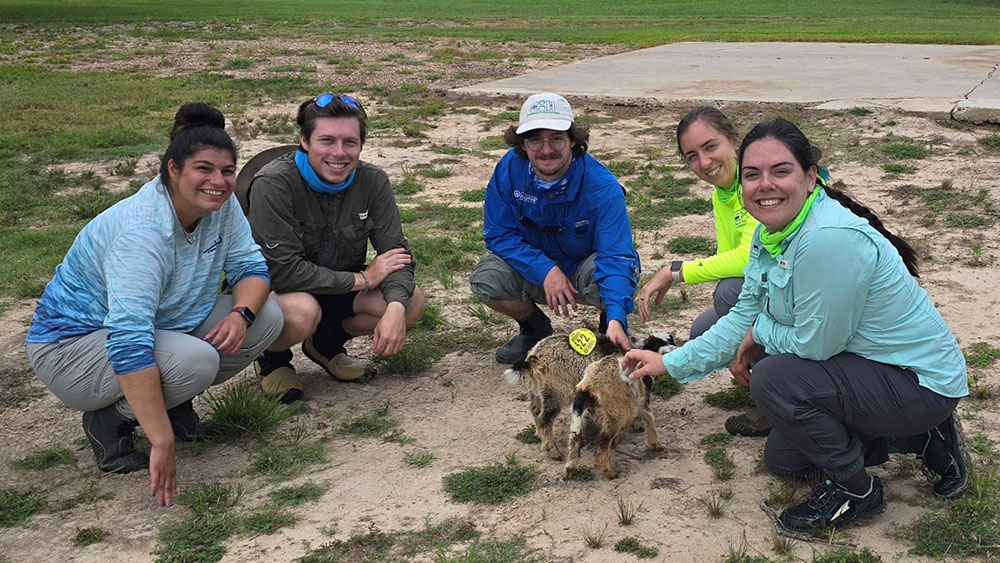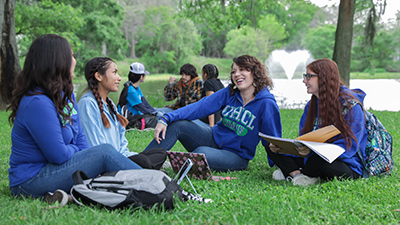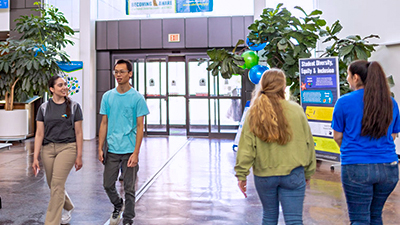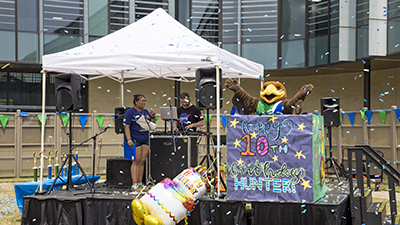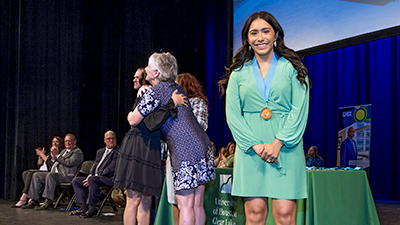
Research Notes
My Summer Experience with the National Rivers and Streams Assessment
By Bailey Steward, Student Research Assistant
I’ve never had a more interesting work week than the ones I’ve spent this summer on the Environmental Protection Agency’s (EPA) National Rivers and Streams Assessment (NRSA). The Environmental Institute of Houston is contracted by the Texas Commission on Environmental Quality (TCEQ) to sample sites across the entire state, from the panhandle to the border. Each sampling day takes us to a new site where we collect various samples, use electroshocking to count fish, and record extensive habitat data over a select portion of the state’s rivers and streams. The EPA uses these data to assess the general condition of aquatic and riparian environments on national and ecoregional scales. For the Texas field crew, every site presented unique challenges, and each day brought new obstacles to overcome.
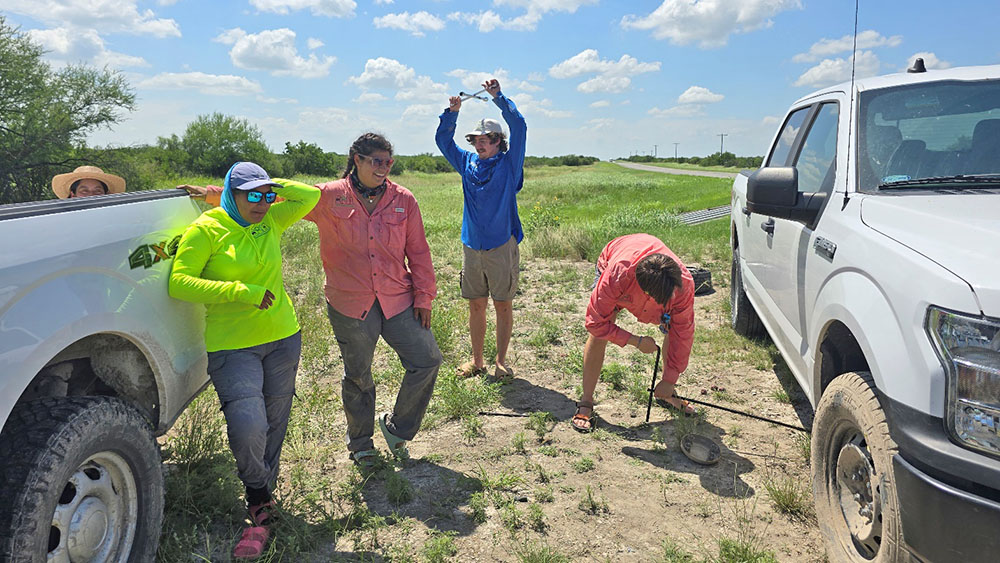
The NRSA is a masterclass in problem-solving. Monday through Friday, the team often finds themselves hundreds of miles away from our home base in Houston, fixing gear in the field, changing flat tires on the side of the road, and hauling heavy loads over rugged terrain. Hot days, sore muscles, and bug bites are the norm, but the resilience and patience of our crew always shine through. “There’s nothing like seeing a sunrise and a sunset in the same field day,” said our fish taxonomist Noah Santee. During one such sunset, Noah recalls leaving a site while hauling a trailer through a bumpy field. It was a long, difficult day, and we were moving slowly, but it was hard not to be in a good mood with the AC blasting and the radio playing “Low Rider” by War. This became our song of the summer.
Every night, the crew tries to have dinner at a local restaurant. Exhausted from the day but exhilarated by another site checked off the list, we often find ourselves in a sort of daze, laughing over plates of BBQ or pasta. The most ridiculous or entertaining events of the day frequently became the highlight of our meals. Harrowing tales of wildlife encounters, amusing in-the-field predicaments, and quirky interactions with landowners or passers-by all get their moment in the spotlight.
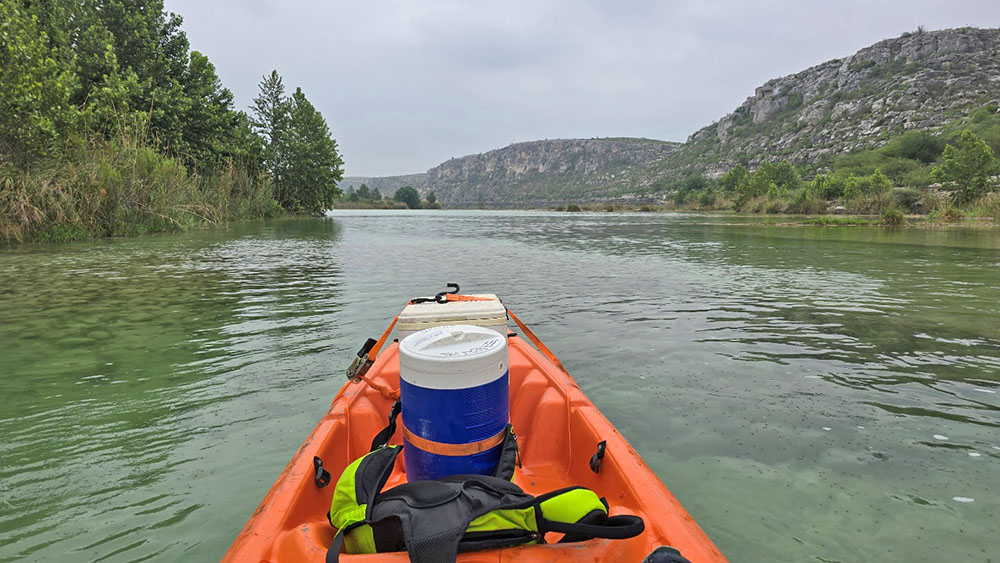
The season has had its standout moments, too: kayaking a remote section of the Devils River with its crystal-clear water and towering rocky canyon walls; visiting the cowboy hat-topped Eiffel Tower in Paris, Texas; and discovering a new population of a rare pupfish. For team lead Kylie Perkins, “cooling off in a nice river during a hot workday” is hard to top. Ice cream and snow cones are team favorites for wrapping up a field day. Long truck rides, field days, dinners, and outings have fostered strong team bonding. “The thing I like most about NRSA is getting to spend time with each of you!” said Lauren Soliz, who also is a team lead. While Lauren's comment is meant to be playfully facetious, there is genuine affection in her words.
My favorite part of the experience is getting to know Texas more intimately than most people ever do. According to the Texas Parks and Wildlife Department, over 93% of the state is privately owned. Many of our sites are on private property, requiring special permissions from landowners for access. With their approval, we’ve explored beautiful forests, canyons, and river valleys that only a handful of people have ever experienced firsthand. The experience and confidence I gained on the NRSA are invaluable, and spending the summer outdoors was a real treat, (though I certainly won’t be taking any days in a climate-controlled office for granted in the near future). As the season wraps up at the end of September, we will have collected data from 80 sites over the past two years, and this information will contribute to advancing our knowledge of Texas’s ecosystems. However, I’d bet that for the NRSA Texas field crew, the moments between samples will stick with us for longer.
